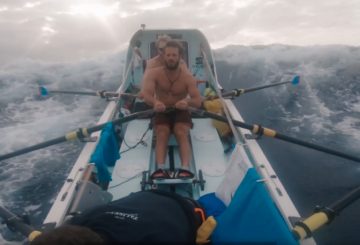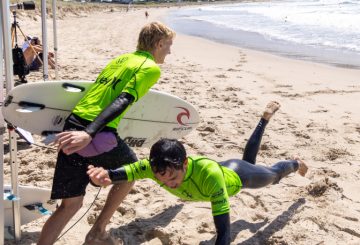마운가누이산(Mt Maunganui)에 있는 한 가정집을 침입한 물개가 바다로 돌아갔다.
로스(Ross)씨네 가족은 지난 8월, 수요일 이른 아침 해안에서 약 150m 떨어진 집 안에서 물개를 발견하고 매우 놀랐다고 한다.
물개는 고양이 문을 통해 안으로 들어왔으며 아이들이 위층에서 잠든 사이 집에서 몇 시간을 보냈다.
해양 생물학자였던 필 로스(Phil Ross)씨는 안타깝게도 당시 집에 없었다.
“이번 일이야말로 해양 생물학자가 집에서 유일하게 그 진가를 발휘할 수 있는 있는 비상 사태였는데 기회를 놓쳐 매우 아쉽다”고 The Guardian과의 인터뷰에서 농담을 건넸다.
로스는 아내 젠(Jen)씨는 아침 일찍 운동을 나갔다가 오전 7시 경 귀가했을 때 물개를 발견했다고 전했다.
아내는 두 자녀를 깨워 “새로운 반려동물”을 함께 구경했다고 한다.
물개는 아내가 현관 밖 정원으로 내보내기 전까지 남는 방과 소파에서 시간을 보냈다. 오전 10경 물개를 바다로 되돌려보내기 위해 환경보호청 담당자가 도착했다.
로스씨는 매년 이 맘때 쯤이 어린 물개가 젖을 떼고 스스로 움직이기 시작하는 때이기 때문에 여기저기 돌아다니는 물개를 보는 일은 드물지 않다고 말했다.
뉴질랜드 물개의 개체수는 증가하는 추세이며, 이전 영역지의 대부분을 다시 되찾아가고 있다. 물개는 빠르게 움직일 수 있으며 위협을 느끼면 사람들에게 심각한 부상을 입힐 수 있다. 또한 전염병의 위험성도 존재한다.
환경보호청은 물개와 20m 정도의 거리를 유지할 것과, 큰 소리를 내거나 개와 아이들이 장난을 걸지 않도록 할 것을 권장하고 있다. 비상 사태에 대한 신고는 0800 DOC HOT(0800 362 468)로 하면 된다.
이미지 출처: 로스(Ross)씨 가족/The Guardian






























































